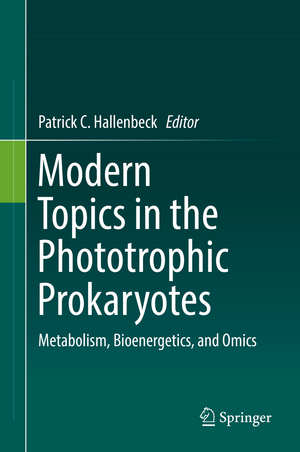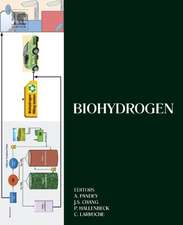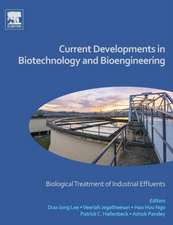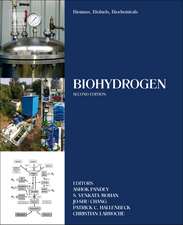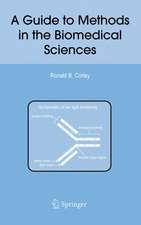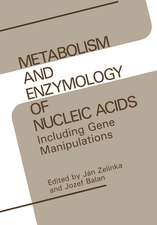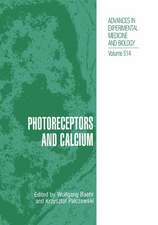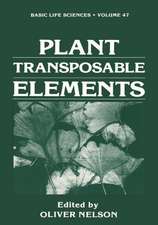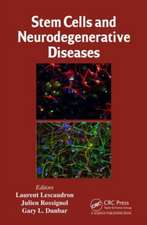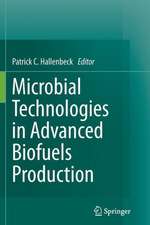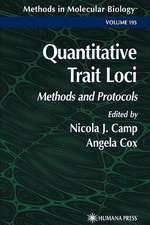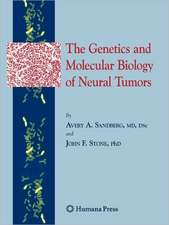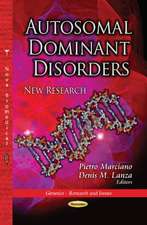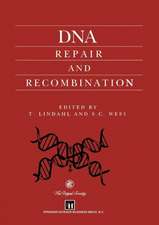Modern Topics in the Phototrophic Prokaryotes: Metabolism, Bioenergetics, and Omics
Editat de Patrick C. Hallenbecken Limba Engleză Hardback – mar 2017
Phototrophic prokaryotes are collectively of great interest for a number of different fundamental and applied perspectives and have long served as models for understanding such basic fundamental biological processes as photosynthesis and respiration. On an ecological/environmental level they are extremely important, being the most abundant photosynthetic organisms on earth and responsible for the majority of the primary productivity in the oceans. They also hold great promise as biotechnological catalysts, being able to couple solar energy conversion through photosynthesis and carbon fixation to the production of biofuels, commodity chemicals and nutraceuticals.
The book is recommended to advanced students and scientists dealing with life sciences, especially in genetics, microbiology and molecular biology.
| Toate formatele și edițiile | Preț | Express |
|---|---|---|
| Paperback (2) | 800.61 lei 38-45 zile | |
| Springer International Publishing – 9 iun 2018 | 800.61 lei 38-45 zile | |
| Springer International Publishing – 14 iul 2018 | 986.49 lei 38-45 zile | |
| Hardback (2) | 821.40 lei 38-45 zile | |
| Springer International Publishing – 26 apr 2017 | 821.40 lei 38-45 zile | |
| Springer International Publishing – mar 2017 | 997.74 lei 38-45 zile |
Preț: 997.74 lei
Preț vechi: 1050.25 lei
-5% Nou
Puncte Express: 1497
Preț estimativ în valută:
190.94€ • 199.09$ • 158.69£
190.94€ • 199.09$ • 158.69£
Carte tipărită la comandă
Livrare economică 17-24 martie
Preluare comenzi: 021 569.72.76
Specificații
ISBN-13: 9783319513638
ISBN-10: 331951363X
Pagini: 429
Ilustrații: V, 350 p. 100 illus., 57 illus. in color.
Dimensiuni: 155 x 235 mm
Greutate: 0.65 kg
Ediția:1st ed. 2017
Editura: Springer International Publishing
Colecția Springer
Locul publicării:Cham, Switzerland
ISBN-10: 331951363X
Pagini: 429
Ilustrații: V, 350 p. 100 illus., 57 illus. in color.
Dimensiuni: 155 x 235 mm
Greutate: 0.65 kg
Ediția:1st ed. 2017
Editura: Springer International Publishing
Colecția Springer
Locul publicării:Cham, Switzerland
Cuprins
Chapter1. Regulation of nitrogen fixation in photosynthetic purple nonsulfur bacteria.- Chapter2. Sulfur metabolism in phototrophic bacteria.- Chapter3. Biochemistry of chlorophyll biosynthesis in photosynthetic prokaryotes.- Chapter4. The Maintenance of Iron homeostasis among prokaryotic phototrophs.- Chapter5. Cyanobacteria photosynthesis: the light reactions.- Chapter6. Photosynthesis in the purple bacteria.- Chapter7. Proteome analysis of phototrophic adaptation.- Chapter8. Photosynthetic carbon metabolism and CO2-concentrating mechanism of cyanobacteria.- Chapter9. Biosynthesis of light-harvesting pigments and their assembly into phycobiliproteins.
Notă biografică
Patrick C. Hallenbeck has a BSc in Physics and a PhD in Biophysics. He is a Full Professor in the Department of Microbiology and Immunology, Faculty of Medicine, Université de Montréal. Dr. Hallenbeck’s research focuses on microbial physiology, applied microbiology, biotechnology, biological energy production, anaerobic metabolism, nitrogen fixation, molecular genetics, and protein chemistry.
Dr. Hallenbeck has conducted numerous projects in both fundamental and applied research, and teaches at both the undergraduate and graduate level. He is currently President of the Biohydrogen Division of the International Hydrogen Energy Association, and on the editorial boards of "Bioresource Technology", "Frontiers in Microbiology" and "Marine Biotechnology". He is the editor of “Recent Advances in Phototrophic Prokaryotes” based on the proceedings of the 13th International Symposium on Phototrophic Prokaryotes and published by Springer
Dr. Hallenbeck has conducted numerous projects in both fundamental and applied research, and teaches at both the undergraduate and graduate level. He is currently President of the Biohydrogen Division of the International Hydrogen Energy Association, and on the editorial boards of "Bioresource Technology", "Frontiers in Microbiology" and "Marine Biotechnology". He is the editor of “Recent Advances in Phototrophic Prokaryotes” based on the proceedings of the 13th International Symposium on Phototrophic Prokaryotes and published by Springer
Textul de pe ultima copertă
This book offers authoritative contributions by world experts actively working on different aspects of phototrophic prokaryotes. Providing up-to-date information in this rapidly advancing field, it covers the range of topics that are currently the focus of research with this group of organisms. As essentially single-celled organisms, phototrophic prokaryotes process many environmental signals and use this information to optimize their metabolism, growth rate, DNA replication and cell division.
Phototrophic prokaryotes are collectively of great interest for a number of different fundamental and applied perspectives and have long served as models for understanding such basic fundamental biological processes as photosynthesis and respiration. On an ecological/environmental level they are extremely important, being the most abundant photosynthetic organisms on earth and responsible for the majority of the primary productivity in the oceans. They also hold great promise as biotechnological catalysts, being able to couple solar energy conversion through photosynthesis and carbon fixation to the production of biofuels, commodity chemicals and nutraceuticals. The book is recommended to advanced students and scientists dealing with life sciences, especially in genetics, microbiology and molecular biology.
Phototrophic prokaryotes are collectively of great interest for a number of different fundamental and applied perspectives and have long served as models for understanding such basic fundamental biological processes as photosynthesis and respiration. On an ecological/environmental level they are extremely important, being the most abundant photosynthetic organisms on earth and responsible for the majority of the primary productivity in the oceans. They also hold great promise as biotechnological catalysts, being able to couple solar energy conversion through photosynthesis and carbon fixation to the production of biofuels, commodity chemicals and nutraceuticals. The book is recommended to advanced students and scientists dealing with life sciences, especially in genetics, microbiology and molecular biology.
Caracteristici
Wide ranging general coverage of a variety of fundamental and applied aspects of this unique group of organisms, many of which have served as model organisms for the study of basic biological processes as well as the basis for the development of biotechnological systems for the production of advanced biofuels and commodity chemicals
Summarizes recent advances in genetics, physiology, biochemistry, molecular biology and systems biology in a text suitable for either the specialist working with this group of organisms or for upper level and advanced degree students
Showcases the recent developments and new research directions in this ever evolving field
Includes supplementary material: sn.pub/extras
Summarizes recent advances in genetics, physiology, biochemistry, molecular biology and systems biology in a text suitable for either the specialist working with this group of organisms or for upper level and advanced degree students
Showcases the recent developments and new research directions in this ever evolving field
Includes supplementary material: sn.pub/extras
